- Home
- Quizzes
- My Quiz Activity
- Newsletters
- Sports Betting
- MY FAVORITES
- Add Sports/Teams
- SPORTS
-
NFL
- NFL Home
- Arizona Cardinals
- Atlanta Falcons
- Baltimore Ravens
- Buffalo Bills
- Carolina Panthers
- Chicago Bears
- Cincinnati Bengals
- Cleveland Browns
- Dallas Cowboys
- Denver Broncos
- Detroit Lions
- Green Bay Packers
- Houston Texans
- Indianapolis Colts
- Jacksonville Jaguars
- Kansas City Chiefs
- Las Vegas Raiders
- Los Angeles Chargers
- Los Angeles Rams
- Miami Dolphins
- Minnesota Vikings
- New England Patriots
- New Orleans Saints
- New York Jets
- New York Giants
- Philadelphia Eagles
- Pittsburgh Steelers
- San Francisco 49ers
- Seattle Seahawks
- Tampa Bay Buccaneers
- Tennessee Titans
- Washington Commanders
-
MLB
- MLB Home
- Arizona Diamondbacks
- Atlanta Braves
- Baltimore Orioles
- Boston Red Sox
- Chicago White Sox
- Chicago Cubs
- Cincinnati Reds
- Cleveland Guardians
- Colorado Rockies
- Detroit Tigers
- Houston Astros
- Kansas City Royals
- Los Angeles Angels
- Los Angeles Dodgers
- Miami Marlins
- Milwaukee Brewers
- Minnesota Twins
- New York Yankees
- New York Mets
- Oakland Athletics
- Philadelphia Phillies
- Pittsburgh Pirates
- San Diego Padres
- San Francisco Giants
- Seattle Mariners
- St. Louis Cardinals
- Tampa Bay Rays
- Texas Rangers
- Toronto Blue Jays
- Washington Nationals
-
NBA
- NBA Home
- Atlanta Hawks
- Boston Celtics
- Brooklyn Nets
- Charlotte Hornets
- Chicago Bulls
- Cleveland Cavaliers
- Dallas Mavericks
- Denver Nuggets
- Detroit Pistons
- Golden State Warriors
- Houston Rockets
- Indiana Pacers
- Los Angeles Clippers
- Los Angeles Lakers
- Memphis Grizzlies
- Miami Heat
- Milwaukee Bucks
- Minnesota Timberwolves
- New Orleans Pelicans
- New York Knicks
- Oklahoma City Thunder
- Orlando Magic
- Philadelphia 76ers
- Phoenix Suns
- Portland Trail Blazers
- Sacramento Kings
- San Antonio Spurs
- Toronto Raptors
- Utah Jazz
- Washington Wizards
-
NHL
- NHL Home
- Anaheim Ducks
- Arizona Coyotes
- Boston Bruins
- Buffalo Sabres
- Calgary Flames
- Carolina Hurricanes
- Chicago Blackhawks
- Colorado Avalanche
- Columbus Blue Jackets
- Dallas Stars
- Detroit Red Wings
- Edmonton Oilers
- Florida Panthers
- Los Angeles Kings
- Minnesota Wild
- Montreal Canadiens
- Nashville Predators
- New Jersey Devils
- New York Islanders
- New York Rangers
- Ottawa Senators
- Philadelphia Flyers
- Pittsburgh Penguins
- San Jose Sharks
- Seattle Kraken
- St. Louis Blues
- Tampa Bay Lightning
- Toronto Maple Leafs
- Vancouver Canucks
- Vegas Golden Knights
- Washington Capitals
- Winnipeg Jets
- NCAAF
- NCAAM
- Boxing
- Entertainment
- Lifestyle
- Golf
- MMA
- Soccer
- Tennis
- Wrestling
- More Sports
- RESOURCES
- My Account
- YB on Facebook
- YB on Twitter
- YB on Flipboard
- Contact Us
- Privacy Policy
- Terms of Service

Musicians/bands that regularly feature(d) unusual instruments
Musical innovation and uniqueness is what tends to set great artists apart from their contemporaries. Especially when it comes to the use of creative, unorthodox, or perhaps odd, instruments. Or simply the way instruments are arranged or showcased within a band.
Here is a list of prominent musicians and bands who have went outside the box when it comes to their instruments.
Arcade Fire (accordion; hurdy-gurdy)
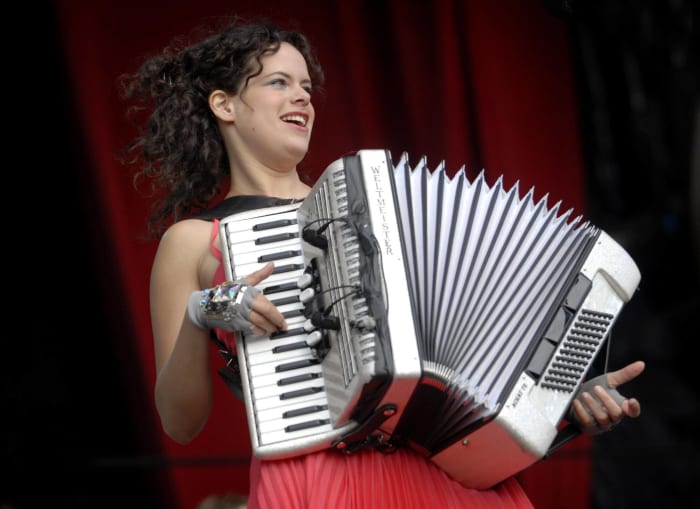
The musical talent within Arcade Fire spans the entire band. However, when it comes to the most versatile member of the group, Régine Chassagne stands above the rest. Especially her work on the accordion, and notably the track "Neighborhood #2 (Laïka)," from the band's stellar 2004 debut Funeral. Now, others (like the E Street Band, Dropkick Murphys and The Band) put that instrument to good use, but Chassagne has made it an important part of the group's arsenal of sound. Meanwhile, when it comes to Chassagne's work on the hurdy-gurdy (a hand-cranked string instrument), check out "Keep the Car Running" from Arcade Fire's brilliant sophomore effort Neon Bible.
Blues Traveler (harmonica)
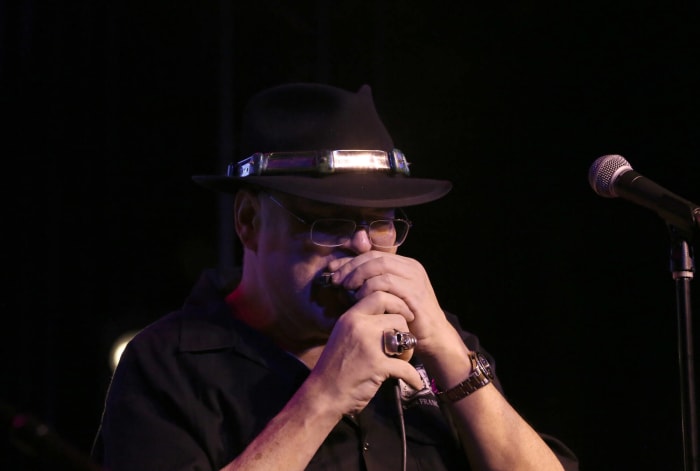
Now, the harmonica is far from an unusual instrument. Yet, when it comes to be being the focal point of a band, Blues Traveler frontman man John Popper raised the playing of the harmonica to a true art form. Popper and his harmonica helped Blues Traveler earn immediate recognition with its 1990 self-titled debut (which featured the steady "But Anyway"). Yet, it wasn't until the band's fourth studio release four (1994), which truly celebrated the band — and Popper's harmonica work — to the masses through songs like "Run-Around" and "Hook."
Björk (celeste; gameleste)

For those not in the know, the celeste (aka celesta or bell-piano) has a heavenly sound. It's usually used to enhance melodies, and featured throughout the Icelandic singer's highly praised fourth studio album Vespertine (2001). Meanwhile, the gameleste is a cross between the celeste and Balinese gamelan tonebars, and the creation of Björk, herself. That particular instrument can be heard, in a rather mesmerizing sense, on the single "Crystalline," which can be found on her brilliant eighth album Biophilia, from 2011.
Dropkick Murphys (bagpipes)
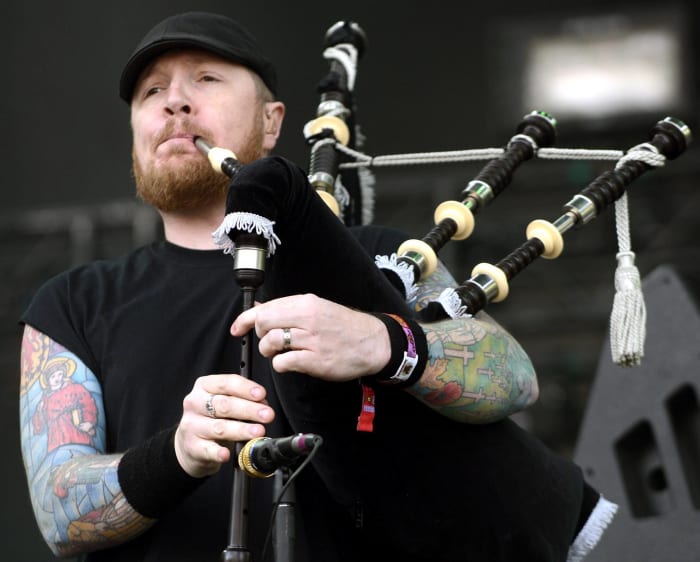
Several bands, notably of Scottish, Irish or Celtic backgrounds, have employed the bagpipes at some point. However, these Boston punks, of a proud Irish persuasion, have made the bagpipes an integral part of the band's legacy. Whether through the work of Robbie "Spicy McHaggis" Mederios or John "Scruffy" Wallace, the pipes have driven Murphys' classics like its stellar version of "Fields of Athenry" and the rousing "Kiss Me I'm S*#tfaced," while lending even more strength to the group's traditionally high-energy live shows.
Grateful Dead (two drummers)

Drums in a band, obviously far from out of the ordinary. But, two drummers in the same group? Plenty of bands have done it, but none better, or more lauded, than that of the Grateful Dead. Bill Kreutzmann was a fine drummer, but gained worthy praise for his playing during the Dead's impactful and epic live sets. To add even more energy and sound expansion, the group brought in Mickey Hart in September 1967 as a second drummer. That double-drum attack not only enhanced the band's concert experience, but studio work, as well.
The Jimi Hendrix Experience (kazoo)

For decades, rock fans have been asking themselves, or out loud, if it really is a kazoo that can be heard during the Hendrix classic "Crosstown Traffic" from the Electric Ladyland (1968) album? And, yes, that would be correct. Naturally, and perhaps without reason to be wrong, listeners likely misinterpreted the kazoo sound for Hendrix's traditionally brilliant guitar work. In typical Hendrix fashion, he was always looking to add an innovative aspect to his music — even when it came down to the simplest of music makers.
The Hȯoters (melodica)

No, the Hȯoters have nothing to do with the infamous restaurant franchise of the same name. Instead, the Philadelphia-based rock outfit, which got its start in the early 1980s and earned some modest success throughout the decade, took its name from the nickname of the melodica: a hand-held, free-reed instrument that resembles a mini keyboard, and is played by blowing into a mouthpiece. For the most part, the melodica was the backbone of The Hȯoters' sound, and showcased, notably, on the hit "And We Danced."
Jackyl (chainsaw)

Unusual sound-making devices are not limited to traditional musical instruments — at least not when it comes to this list. This Georgia-based rock/glam-metal band broke out in the early 1990s, and is actually still playing today. Jackyl is led by frontman Jesse James Dupree, whose solo with the chainsaw (yes, that's right) on "The Lumberjack," from the band's self-titled 1992 studio album, is still what defines the group. Sure, it's a gimmick, and serves no other musical purposes, but give Dupree points for creativity, plus the fact he's made a career by incorporating the chainsaw within the Jackyl sound.
Jethro Tull (flute)

Armed with his flute, frontman Ian Anderson helped turn Jethro Tull into a progressive-rock giant during the 1970s. In fact, the band's flute-laden tracks like "Cross-Eyed Mary," "Hymn 43," "Locomotive Breath," and, of course, the epic opus known as "Thick as a Brick" are still classic-rock staples to this day. When it came to setting oneself a part from the rest of the rock world, Tull obviously did that through Anderson's flute. And it's always important to remember that Jethro Tull is the name of the band, not Anderson himself.
Led Zeppelin (bow)

There have been several musicians who fancied the use of a violin/cello bow to play the guitar. However, none earned more notoriety than the legendary Jimmy Page, when it came to the craft. As history goes, Page was introduced to the playing style while a member of The Yardbirds, but made it relatively famous during his days with Led Zeppelin. Check out Page's fantastic bow work on Zeppelin gems "Dazed and Confused," from the band's exceptional 1969 self-titled debut, and "In the Evening," from In Through the Out Door (1979).
Pat Metheny (pikasso guitar)
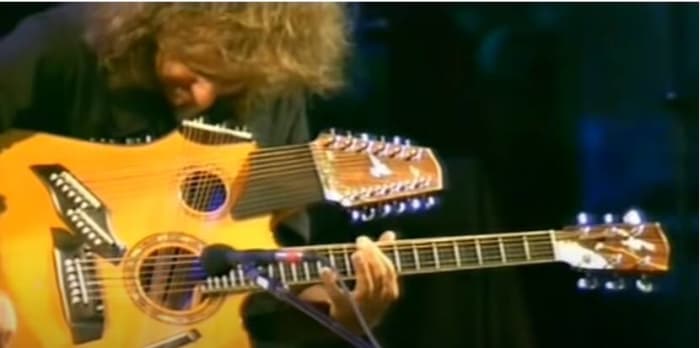
Perhaps the greatest jazz guitarist of all time, Metheny has 20 Grammy awards to his name. Metheny's musical excellence can be measured on many levels. However, it's his innovative brilliance that we'll highlight here. In particular, Metheny's use of the custom-made, 42-string Pikasso I guitar, which he began playing during the mid-1980s. It can be heard on his albums Quartet (1996), Imaginary Day (1997), Jim Hall & Pat Metheny (1999). Leave it to a legendary guitar player to have a completely unique instrument.
Partridge Family (synth harpsichord)
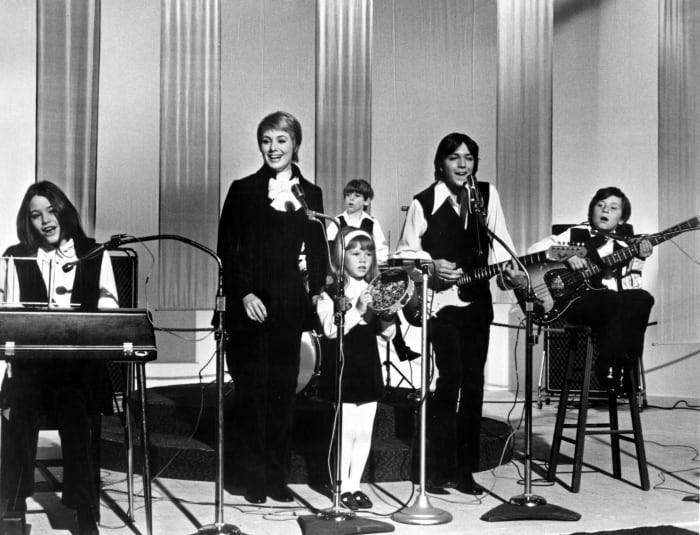
Yes, there were real musicians in the Partridge Family — namely David Cassidy and Shirley Jones. However, it can been seen at least in a few episodes of the popular show from the 1970s that the Laurie character (Susan Dey) was playing a synthesized form of the harpsichord on what appears to be the organ. "I Think I Love You," perhaps the most recognizable song from the series, (other than the legendary theme song), is a good example of the use of that specific song. Prior to that, the Beatles also fancied the harpsichord sound.
Pearl Jam/Eddie Vedder (ukulele)

Famed frontman Eddie Vedder has long appreciated the subtle beauty of the ukulele, which remains part of his repertoire within the confines of Pearl Jam, and during his successful solo projects (which included his 2011 Ukulele Songs). Perhaps the most well-known Pearl Jam tune to incorporate the smaller guitar-like instrument is the beautiful "Just Breathe" from the 2009 Backspacer album. Vedder tends to bring the "uke" out at just about every Pearl Jam live show, once again showing his deep devotion to the instrument.
Pink Floyd (glass harp)

Pink Floyd was always experimenting when it came to the instrumental aspects of its music. Rumor has it, the band seriously toyed with the idea of making an entire studio album with household items. Eventually, the band gathered a mess of wine glasses, filled each with vary levels of water, organized them, then manipulated the rims with their fingers to make an eerie, harp-like sound, which can be heard during the opus, multi-part "Shine On You Crazy Diamond," from the 1975 classic Wish You Were Here. This "instrument" adds to the beauty, complexity and emotion of a truly ambitious and captivating piece of music.
Jon Spencer Blues Explosion (theremin)

The Jon Spencer Blues Explosion might have flown under radar during the run of the underappreciated three-piece's run, which started in 1991 and featured nine studio albums of its own. At the forefront of this rock outfit — which also dabbled in the blues, soul and even some hip hop — was Jon Spencer himself. Spencer was known for playing the theremin, an electronic instrument that does not need physical contact to play. Instead, one's hands can manipulate the instrument's two antennae that make the eerie sound — similar to those from old-time science-fiction films.
Bruce Springsteen & the E Street Band (glockenspiel)

The late Danny Federici was more than just the longtime keyboardist for the E Street Band. He played the accordion, and also shined on the glockenspiel. Yes, roughly the same instrument little kids use to tap on for entertainment. The glock was part of Federici's instrumental arsenal as an E Streeter, and, surprising to likely many, had a prominent presence on The Boss's iconic classic Born to Run. It's an example of great artists, and bands, coming together to not only experiment, but incorporate even a childlike instrument like this, to achieve musical greatness.
Sufjan Stevens (guitalin)
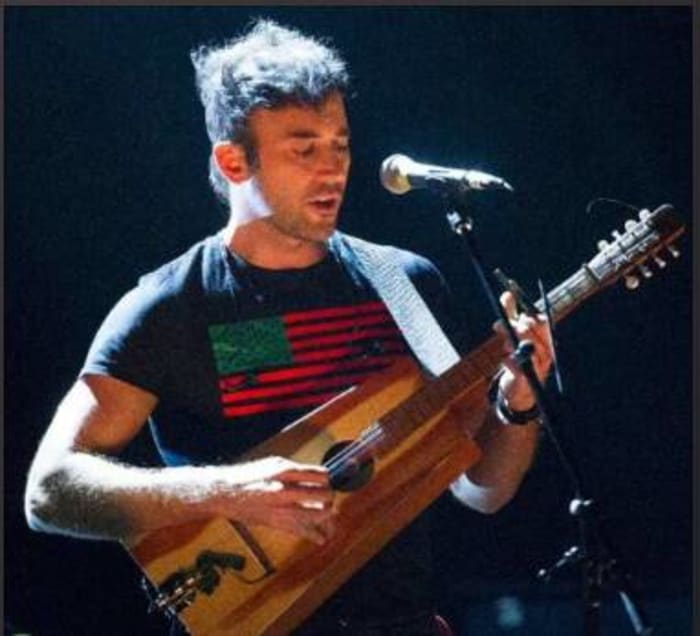
This indie folkster might be the most innovative musician on this list. The multi-talented and versatile Stevens can play several instruments. In 2018, Stevens was nominated for an Academy Award for the song "Mystery of Love," from Luca Guadagnino’s highly praised film Call Me By Your Name. On that track, Stevens makes use of the "guitalin," a sort of hybrid guitar and mandolin, that, as legend has it, was developed just for him. It's not surprising that a musician of his magnitude, who is always willing to try something new, would have his own instrument.
The Troggs (ocarina)
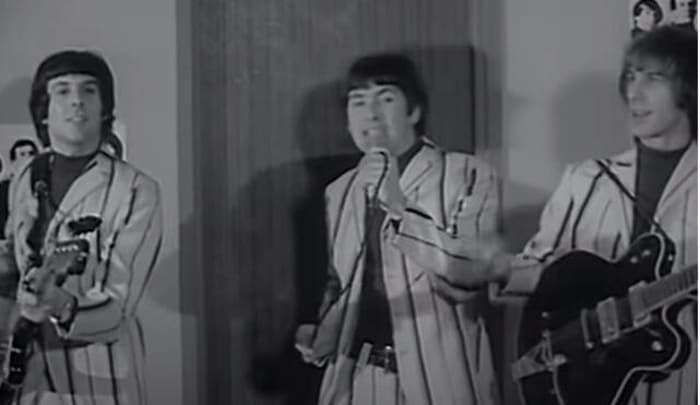
The ocarina might resemble a mini hair dryer, but its place in music history is quite important. Enter The Troggs, the English rock band that broke out in the mid-1960s, and was actually ahead of its musical time when it came to overall musicianship. The band is best known for the 1965 iconic classic "Wild Thing," which features a unique ocarina solo. OK, back to that instrument. For those unaware, it's a circular, pipe-shaped instrument that makes a flute-like sound, though seemingly more hollow. So, the next time "Wild Thing" comes on, keep the ears perked for the ocarina.
Keith Urban (bouzouki)
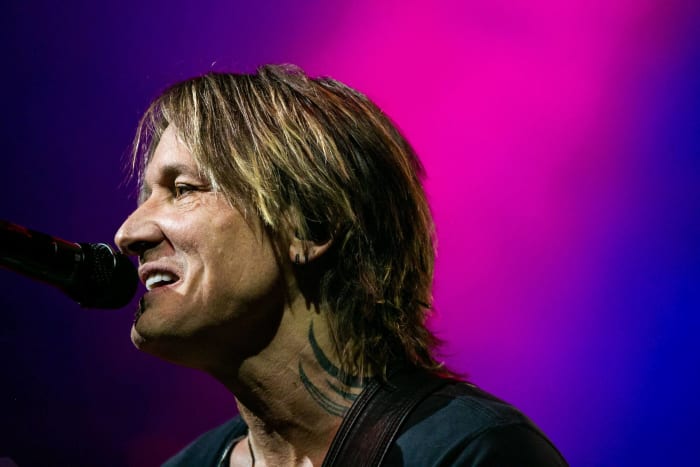
The bouzouki, on sight, looks like a mix between the traditional guitar and mandolin. It features a round body with a long neck; however, it brings so much more to the table. Just listen to its presence from the country legend. Always playing with his sound, Urban has long appreciated the instrument. In addition to other unique instruments like the ganjo and slide guitar. A strong example of Urban's stellar playing of the bouzouki is on the popular "I Told You So," which can be found on the 2006 album Love, Pain & the Whole Crazy Thing.
Violent Femmes (xylophone)
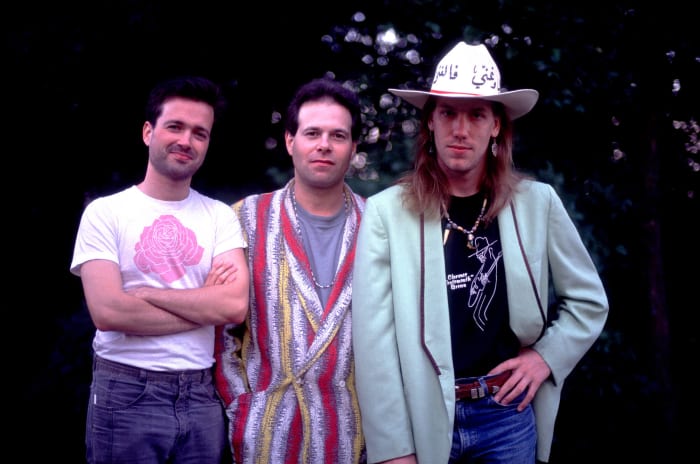
Known as the "cousin" of the aforementioned glockenspiel, though the xylophone is comprised of wooden bars, while the glock's are metal. The xylophone also has a notable presence on the Femmes' classic "Gone Daddy Gone," among others, from the group's self-titled debut album that came out back in 1983. The highly talented and master of many instruments Brian Ritchie, mostly known as the band's bassist, does the honors on the xylophone. It was an impressive introduction to a beloved group that's always been known for its eccentricity.
A Chicago native, Jeff Mezydlo has professionally written about sports, entertainment and pop culture for nearly 30 years. If he could do it again, he'd attend Degrassi Junior High, Ampipe High and Grand Lakes University.
More must-reads:
Trending in Entertainment
Customize Your Newsletter
 +
+
Get the latest news and rumors, customized to your favorite sports and teams. Emailed daily. Always free!
Use of this website (including any and all parts and
components) constitutes your acceptance of these
Terms of Service and Privacy Policy.

